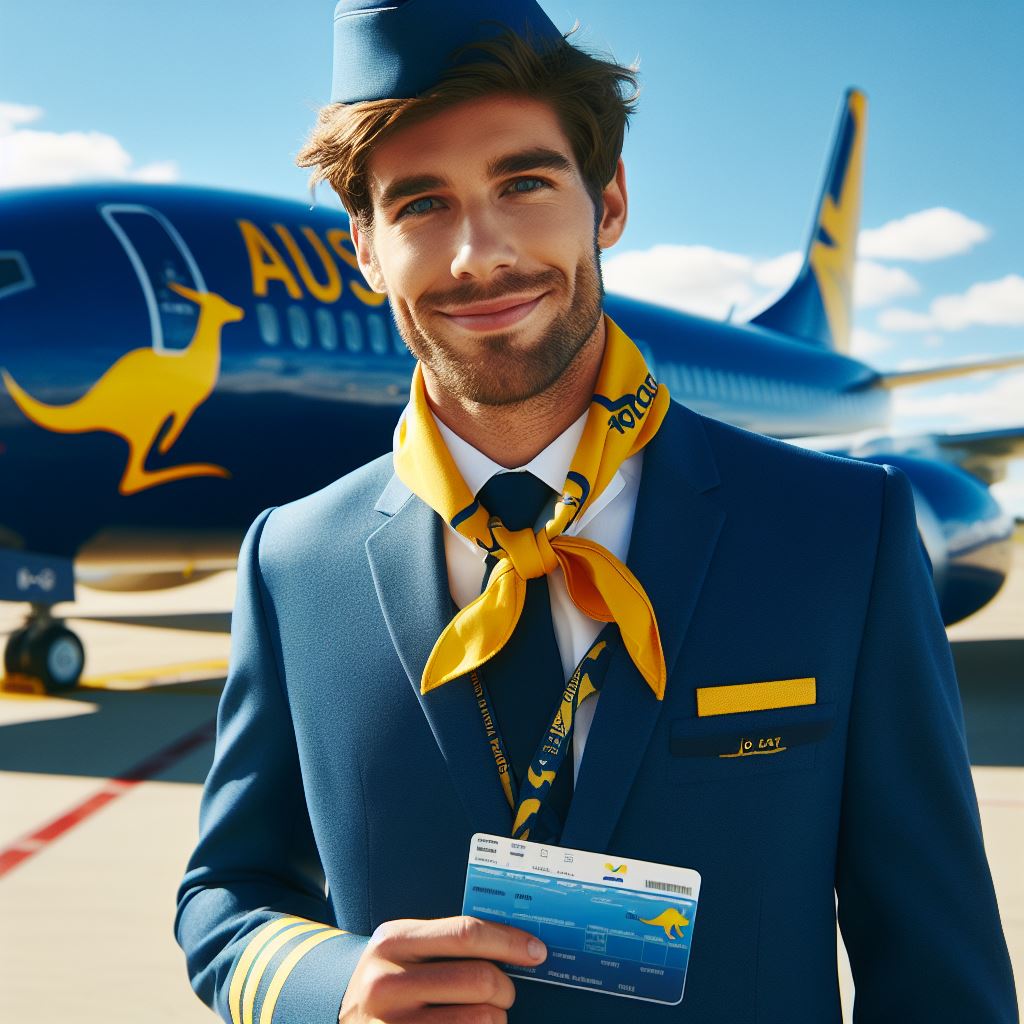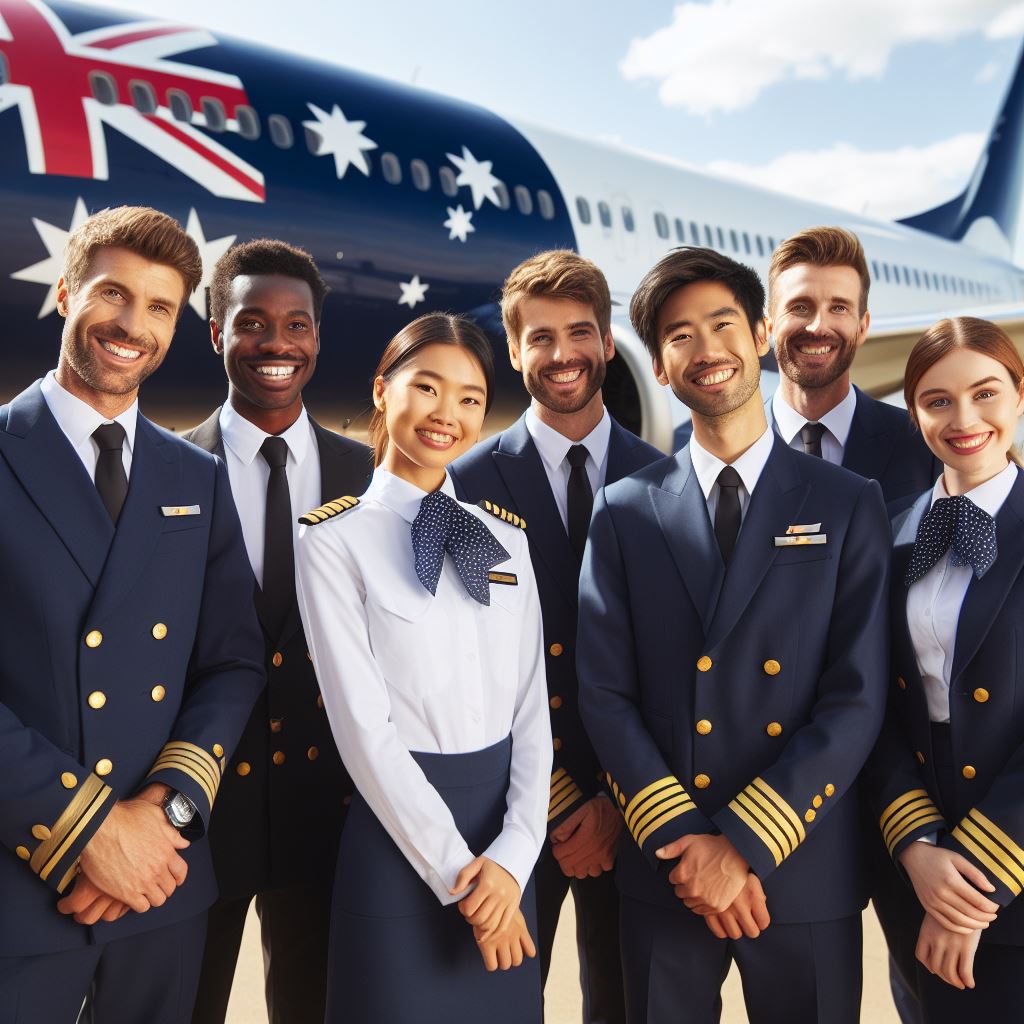Introduction
Flight attendants are integral to passenger safety, well-being, and experience during air travel.
Their duties range from boarding assistance to managing emergencies and providing first aid.
Comprehensive training is crucial to handle diverse scenarios with calmness and efficiency.
In Australia, aspiring flight attendants undergo thorough training covering various responsibilities.
Programs include classroom instruction, practical exercises, and simulations.
Topics encompass safety procedures, emergency protocols, customer service, first aid, and cultural sensitivity.
Training emphasizes teamwork, communication, and situational awareness.
Effective communication with passengers and crew ensures smooth flight operation and safety.
A customer-centric mindset prioritizes exceptional service while maintaining safety standards.
Overall, Australian flight attendant training is rigorous and prepares individuals for dynamic roles.
Aspiring attendants gain the knowledge, skills, and confidence to excel in providing safe, professional, and exceptional service in the aviation industry.
Explanation of the job of a flight attendant
Flight attendants are responsible for various tasks on a flight, including ensuring passenger safety, providing excellent customer service, and assisting with emergencies.
They play a vital role in maintaining a positive travel experience for passengers.
Importance of proper training for flight attendants
Proper training equips flight attendants with the necessary skills and knowledge to handle different situations, such as medical emergencies, turbulence, or evacuation procedures.
It ensures they can provide proper assistance and maintain a calm and professional demeanor.
Purpose
This blog post aims to provide insights into the training process for aspiring flight attendants in Australia.
It will shed light on the training programs, requirements, and expectations, giving readers a comprehensive understanding of what to expect in their pursuit of a career in aviation.
By addressing the job responsibilities, emphasizing the importance of training, and outlining the purpose of this blog post, readers can gain valuable information about flight attendant training in Australia.
Whether considering a career as a flight attendant or simply interested in the aviation industry, this blog post will serve as a useful guide.
Overview of Flight Attendant Training in Australia
Brief history of flight attendant training in Australia
- Flight attendant training in Australia has evolved over the years to meet industry demands.
- The first known training program was introduced in the 1940s by Qantas Airways.
- These early programs focused on safety procedures and grooming standards.
Current regulations and requirements for becoming a flight attendant in Aus
- The Civil Aviation Safety Authority (CASA) regulates flight attendant training in Australia.
- To become a flight attendant, candidates must meet certain criteria:
- a. Minimum age of 18 years
- b. High school diploma or equivalent
- c. Good command of English
- d. Physically fit and able to meet medical requirements
Importance of choosing a reputable training program
- Reputable training programs ensure that flight attendants are equipped with necessary skills.
- Look for programs that cover a wide range of topics, including customer service and emergency procedures.
- Accreditation from recognized industry bodies provides assurance of quality training.
- Reputable programs also often have connections with airlines, increasing job prospects for graduates.
In essence, flight attendant training in Australia has a rich history and stringent regulations.
It’s crucial for aspiring flight attendants to choose reputable training programs that provide comprehensive training and increase job prospects.
By meeting the requirements and investing in proper training, individuals can embark on a rewarding career as a flight attendant.
Read: Airline Pilot Salaries: Aussie Edition
Pre-Training Requirements and Application Process
Age and educational requirements for flight attendant training in Australia
In Australia, prospective flight attendants must be at least 18 years old and have a high school diploma or equivalent.
English language proficiency requirements
Proficiency in the English language is crucial for flight attendants in Australia.
Applicants are usually required to provide evidence of their English language skills through tests like IELTS or TOEFL.
Physical requirements and medical examinations
Being a flight attendant demands good physical health and stamina.
Applicants must undergo medical examinations to ensure they meet the required standards for the job.
These examinations typically evaluate eyesight, hearing, cardiovascular health, and overall physical fitness.
Overview of the application process
Applying for flight attendant training in Australia involves several stage
- Resume and cover letter: A resume highlighting relevant skills and experiences, along with a well-written cover letter, are usually required.
- Initial screening: Applicants who meet the basic requirements are then screened based on their qualifications.
- Assessment day: Successful candidates are invited to an assessment day, which includes group activities, interviews, and aptitude tests.
- Background checks: Prior to acceptance, a thorough background check is conducted, including criminal record and reference checks.
- Final interviews: Shortlisted applicants have final interviews with airline representatives.
- Conditional offer and training: Successful candidates receive a conditional offer, contingent upon completing flight attendant training.
Read: Navigating the Australian Airspace: A Pilot’s View
Training Program Curriculum and Duration
Basic training modules
- Safety procedures are an integral part of flight attendant training.
- Trainees will learn how to handle emergencies and ensure the safety of passengers.
- Passenger assistance training will focus on providing excellent customer service and addressing their needs.
Supplementary training modules
- In-flight services training will cover the various services offered during a flight.
- Customer service skills will be developed to enhance interactions with passengers.
- Communication skills training will teach effective communication techniques in different situations.
Aviation terminology and aircraft systems
- Trainees will be introduced to the technical terms used in the aviation industry.
- An understanding of the aircraft systems will be essential for flight attendants.
Hands-on training, practical exercises, and simulations
- Trainees will undergo hands-on training to familiarize themselves with onboard equipment.
- Practical exercises will simulate in-flight scenarios to test the trainees’ knowledge and skills.
- Simulations will enable trainees to practice emergency procedures in a controlled environment.
Duration of the training program
The training program typically lasts for several weeks, depending on the airline. Each module is carefully designed to ensure comprehensive training in all areas required for a flight attendant.
Your Personalized Career Strategy
Unlock your potential with tailored career consulting. Get clear, actionable steps designed for your success. Start now!
Get StartedTo ensure proficiency, trainees must pass both theoretical and practical examinations throughout the program.
Upon successful completion of the training program, aspiring flight attendants will be equipped with the necessary skills and knowledge to excel in their roles.
Flight attendant training goes beyond serving drinks and snacks to passengers. It encompasses a wide range of skills and knowledge that enable flight attendants to ensure the safety, comfort, and satisfaction of passengers.
Basic training modules focus on safety, emergency procedures, and passenger assistance. Understanding aviation terminology and aircraft systems is also crucial for flight attendants.
Supplementary training modules emphasize in-flight services, customer service, and effective communication skills. These modules prepare flight attendants to provide exceptional service and address passengers’ needs.
Hands-on training, practical exercises, and simulations play a vital role in flight attendant training. Trainees gain practical experience in handling different situations and learn how to respond to emergencies.
The duration of the training program varies depending on the airline. However, most programs last for several weeks to ensure comprehensive training. Trainees must pass theoretical and practical examinations to demonstrate their proficiency.
By completing the flight attendant training program, individuals will be well-prepared to handle the demands and challenges of their role. They will possess the necessary skills and knowledge to excel in providing exceptional service to passengers.
Read: Essential Skills for Australian Airline Pilots

See Related Content: How to Become an Airline Pilot in Australia
Assessment and Certification
Overview of the Assessment Methods used during Flight Attendant Training
- Written exams
- Practical scenarios
- Role-playing exercises
- Emergency drills
- Customer service evaluations
Flight attendant training institutes utilize various assessment methods to evaluate trainees’ knowledge and skills.
These assessments include written exams to test theoretical understanding, practical scenarios to simulate real-life situations, and role-playing exercises to assess communication and problem-solving abilities.
Additionally, trainees are required to participate in emergency drills to gauge their response to critical situations.
Furthermore, customer service evaluations are conducted to ensure trainees possess the necessary interpersonal skills required for the role.
Importance of passing all assessments for certification
- Ensures proficiency and competence
- Adherence to safety protocols
- Maintaining high-quality standards
- Promotes passenger satisfaction
- Enhances airline reputation
Passing all assessments during flight attendant training is crucial for certification.
It guarantees that trainees have attained the necessary proficiency and competence to perform their duties effectively.
By evaluating their knowledge and skills, assessments ensure that flight attendants adhere to safety protocols, which is paramount for the well-being of passengers and crew.
Meeting the standards set in these assessments promotes high-quality service, leading to passenger satisfaction and an enhanced reputation for the airline.
Recurrent training and ongoing assessments for current flight attendants
- Regular training sessions
- Update on new procedures
- Refresher courses
- Periodic proficiency assessments
- Continual improvement
Flight attendants undergo recurrent training and ongoing assessments to maintain their competence and stay updated on new procedures.
Regular training sessions are conducted to refresh their knowledge and hone their skills.
These sessions may include refresher courses on emergency procedures, customer service, and first aid.
Periodic proficiency assessments are also conducted to ensure that flight attendants are consistently meeting the required standards.
By participating in these assessments and undergoing continual improvement, flight attendants can provide a high level of service to passengers.
Read: The Future of Aviation in Australia
Stand Out with a Resume That Gets Results
Your career is worth more than a generic template. Let us craft a resume and cover letter that showcase your unique strengths and help you secure that dream job.
Get HiredSee Related Content: Study Paths to Become a Logistics Manager
Benefits and Challenges of Flight Attendant Training
Potential benefits and perks of being a trained flight attendant in Australia
- Exciting travel opportunities to different destinations around the world.
- Access to discounted airline tickets for personal travel and family members.
- The opportunity to meet new people and build a global network.
- A chance to work in a dynamic and fast-paced environment.
- Competitive salary and benefits package.
- Potential for career growth and advancement within the aviation industry.
- The satisfaction of providing excellent customer service and ensuring passenger safety.
Challenges and expectations during the training process
- Rigorous physical and mental training to ensure safety protocols are followed correctly.
- Long working hours and irregular schedules, including weekends and holidays.
- The pressure to handle emergencies and difficult passengers professionally.
- Adapting to different time zones and coping with jet lag.
- The need to maintain a high level of personal grooming and appearance.
- Continuous learning and staying up-to-date with industry regulations and procedures.
- Working in confined spaces for extended periods, such as during long-haul flights.
Tips for success and overcoming challenges
- Stay committed and motivated throughout the training process.
- Develop excellent communication and interpersonal skills.
- Practice problem-solving and decision-making under pressure.
- Prioritize self-care and manage fatigue and jet lag effectively.
- Seek support from colleagues and mentors to navigate challenging situations.
- Continuously update knowledge and skills through ongoing training and professional development.
- Embrace cultural diversity and be respectful towards passengers from different backgrounds.
- Maintain a positive attitude and stay resilient during challenging times.
- Take advantage of networking opportunities to build industry connections.
- Prepare for unexpected situations by staying alert and practicing emergency procedures regularly.
Being a trained flight attendant in Australia offers:
- Travel to diverse worldwide destinations, exploring cultures and places.
- Access to discounted airline tickets for personal and family travel.
- Opportunities to connect with people globally, fostering friendships.
- Involvement in a dynamic, fast-paced environment ensuring passenger safety.
- Competitive salary and benefits, with growth potential in the aviation industry.
Challenges include:
- Physically and mentally demanding training focused on safety protocols.
- Long, irregular working hours, including weekends and holidays.
- Handling emergencies and difficult passengers with composure and professionalism.
- Coping with frequent travel effects like jet lag and grooming standards.
- Continuous learning to stay updated with industry regulations and procedures.
Success entails:
- Commitment and motivation to overcome challenges.
- Developing excellent communication and problem-solving skills.
- Prioritizing self-care and managing fatigue effectively.
- Seeking guidance from colleagues and mentors.
- Embracing cultural diversity and maintaining a positive attitude.
Lastly, while flight attendant training in Australia presents challenges, the rewards are fulfilling with dedication and adaptability.
Conclusion
In this blog post, we’ve outlined the fundamental aspects of flight attendant training in Australia.
Aspiring flight attendants are strongly encouraged to pursue their aspirations and consider investing in comprehensive training within Australia’s aviation sector.
With intensive programs covering safety protocols, customer service techniques, emergency procedures, and more, aspiring flight attendants can acquire the essential skills and knowledge needed to thrive in this dynamic profession.
Choosing to undergo proper training in Australia equips individuals with the expertise to excel in a career that offers not only the opportunity to explore different parts of the globe but also the responsibility of ensuring the safety, comfort, and satisfaction of passengers on board flights.
By taking this crucial step towards their dreams, aspiring flight attendants can open doors to a fulfilling and rewarding career in the aviation industry.
Therefore, to all those aspiring to take to the skies as flight attendants, seize the chance to embark on this exciting journey.
Explore the training opportunities available in Australia and prepare to soar to new heights in a profession that promises adventure, growth, and the chance to make a positive impact on the travel experiences of countless passengers.




